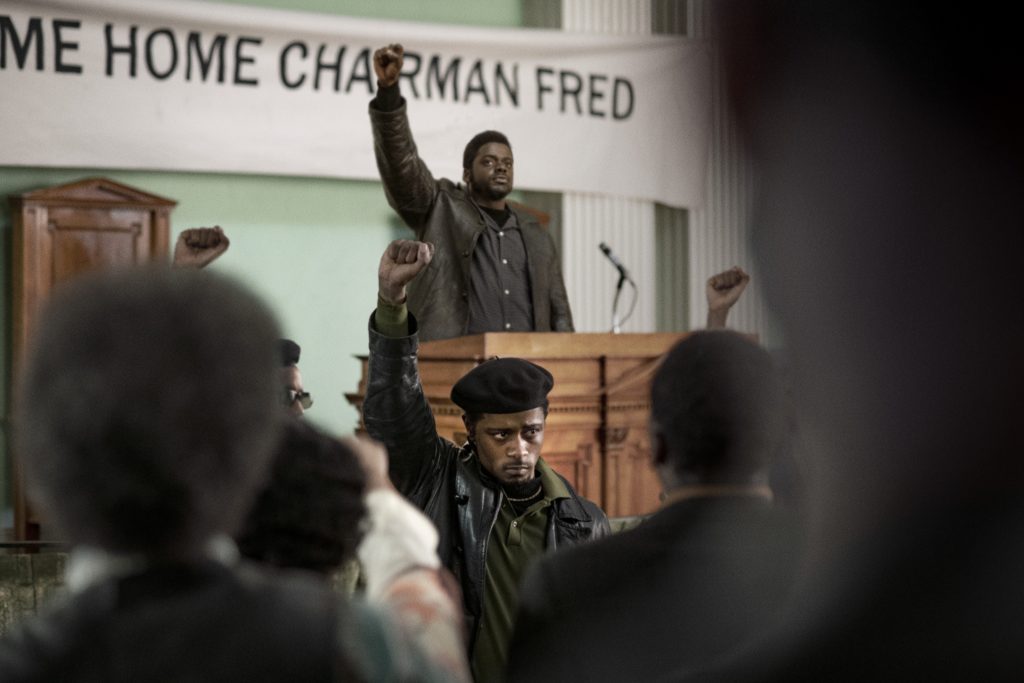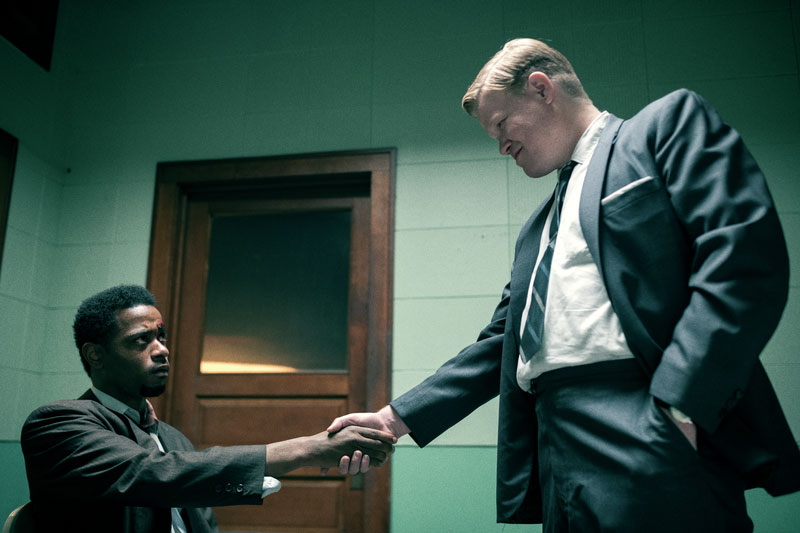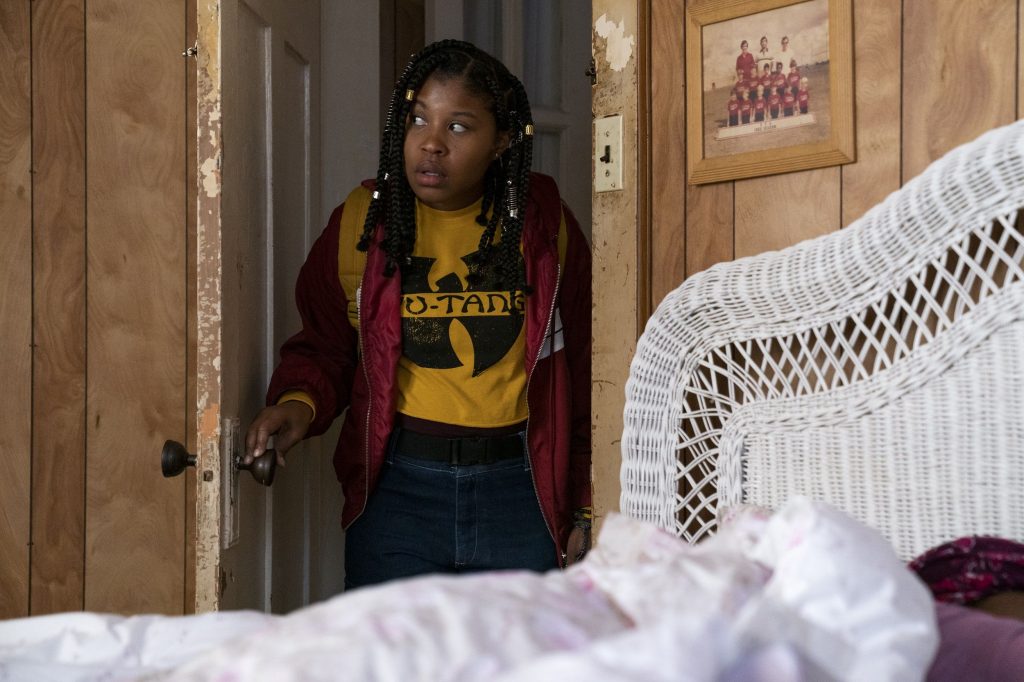June 6, 2023
by Carla Hay

“Transformers: Rise of the Beasts”
Directed by Steven Caple Jr.
Culture Representation: Taking place in 1994, in New York City, Peru, and other parts of the universe, the sci-fi action flick “Transformers: Rise of the Beasts” features a racially diverse cast of characters (Latino, white, African American, Asian) portraying alien robots and working-class and middle-class humans.
Culture Clash: A former U.S. Army private/comms tech and a museum researcher team up with alien robots called the Transformers and Maximals to save the world from villain robots Terrorcons and Predacons.
Culture Audience: Besides appealing to the obvious audience of “Transformers” franchise fans, “Transformers: Rise of the Beasts” will appeal primarily to people who are interested in crowd-pleasing sci-fi action films that are low on surprises but high on big-spectacle fight scenes and engaging comedy and drama.

“Transformers: Rise of the Beasts” is a triumphant sci-fi action spectacle that is chock full of memorable characters and engaging storylines. It strikes the right balance between evoking nostalgia and creating excitement for new aspects to the “Transformers” franchise. It’s also by far the most diverse “Transformers” movie so far, but it’s diversity that looks natural, not forced. Even people who know nothing about the “Transformers” franchise (which is based on Hasbro toys that spawned multiple animated TV series) will be charmed by “Transformers: Rise of the Beasts,” as long as they’re up for eye-popping ride of robot mayhem. For people who don’t know, Transformers are about alien robots that can transform into various things to disguise themselves.
“Transformers: Rise of the Beasts” is directed by Steven Caple Jr. , a self-professed “Transformers” fan. This love of the “Transformers” franchise shows in how well Caple is able to pay homage to the original spirit of the 1996 to 1999 animated TV series “Beast Wars: Transformers” (also known as “Beasties: Transformers”) and make “Transformers: Rise of the Beasts” a standout “Transformers” cinematic experience. The movie follows the 2018 spinoff film “Bumblebee,” which took place in 1987, and told the origin story of a popular Transformer named Bumblebee, who transforms into a black and yellow 1977 Chevrolet Camaro. “Bumblebee,” directed by Travis Knight, was a hit with audiences and critics.
It’s a welcome turnaround from the 10-year downward spiral of quality for the “Transformers” movie series under the direction of Michael Bay, who helmed the first five live-action “Transformers” movies, starting with 2007’s pleasantly mediocre “Transformers” and ending with 2017’s atrocious “Transformers: The Last Knight.” Each movie was more ridiculous than its predecessor, with Bay making many of these “Transformers” movies into overly long, bloated endurance tests for viewers.
Clocking in at a just-right total running time of 127 minutes, “Transformers: Rise of the Beasts” is an example of how to do a highly entertaining “Transformers” movie without it being more than 150 minutes long. “Transformers: Rise of the Beasts” has five screenwriters (Joby Harold, Erich Hoeber, Jon Hoeber, Darnell Metayer and Josh Peters), but the story doesn’t feel like there were “too many cooks in the kitchen.” The movie also gets rid of Bay’s tired “Transformers” movie cliché of the lead actress being just a sex-symbol sidekick for the lead actor. In “Transformers: Rise of the Beasts,” the chief human heroine has intelligence as well as good looks.
“Transformers: Rise of the Beasts” mostly takes place in 1994, but the beginning of the movie shows a scene that took place centuries earlier in outer space. In this scene, a massive evil entity called Unicron (voiced by Colman Domingo) dispatches his underlings to destroy the jungle-like homeland of Maximals, a group of intelligent robots that can disguise themselves as wild animals. Unicron literally eats planets in order to survive.
Unicron’s main enforcers are zombie robots calls Terrorcons, led by the ruthless Scourge (voiced by Peter Dinklage), who can transform into a 1994 Peterbilt 359. Scourge has two main sidekicks: Nightbird (voiced by Michaela Jaé Rodriguez, formerly known as Mj Rodriguez) is a ninja assassin who can transform into a black Nissan Skyline GTR R33. Battletrap (voiced by David Sobolov) is a scout who can transform into an orange and black GMC. Predacons, a race of ancient Cybertronian beasts, are another group of antagonists in the movie. If these descriptions sound unappealing, then “Transformers: Rise of the Beasts” is not the movie for you.
The refugee Maximals, whose planet was destroyed in the beginning of the movie, fled to many parts of the universe. Many of the Maximals ended up on Earth in Peru, including Maximal leader Optimus Primal (voiced by Ron Perlman), who transforms into a 13-foot-tall metallic silverback gorilla. The other Maximals in the movie are Airazor (voiced by Michelle Yeoh), who transforms into a peregrine falcon; Cheetor (voiced by Tongayi Chirisa), who transforms into a cheetah that’s the size of a small truck; and Rhinox (voiced by Sobolov), who transforms into a rhino that weighs 8,000 pounds.
Returning to the “Transformers” movie series are the heroic robots called the Autobots, led by Optimus Prime (voiced by Peter Cullen), who transforms into a red 1987 Freightliner FLA truck. Bumblee also makes his return. And having a more prominent presence than in previous “Transformers” movies is Arcee (voiced by Liza Koshy), a sharpshooter who transforms into a dark pink and white Ducati 916 motorcycle.
All of these Autobots don’t get as much screen time in the movie as an Autobot making his first live-action “Transformers” movie appearance: the wisecracking Mirage (voiced by Pete Davidson), who transforms into special edition silver 1993 Porsche 911 Carrera RS 3.8. It’s through Mirage that the human heroes of the story get involved in the battle to save Earth from being destroyed.
And let’s not forget the humans in this movie. The main human protagonist is Noah Diaz (played by Anthony Ramos), a former U.S. Army private who worked as a comms tech. Viewers find out that Noah was discharged from the Army and is back living in his hometown of New York City’s Brooklyn borough with his mother Breanna Diaz (played by Luna Lauren Velez, formerly known as Lauren Velez) and his 11-year-old brother Kristopher “Kris” Diaz (played by Dean Scott Vazquez), who happens to have sickle cell anemia. Noah has been struggling to find a job. I the beginning of the movie, he’s rejected for an interview for a job as a security guard because a former manager described Noah as unreliable.
Kris’ increasing medical bills are causing a lot of financial stress on the family. And so, a desperate Noah reluctantly accepts an offer from a friend named Reek (played by Tobe Nwigwe) to steal a Porsche. Noah finds out that the Porsche is really a giant robot named Mirage, who takes Noah to a warehouse, where Noah meets Optimus Prime, Bumblebee and Arcee. Optimus Prime is furious with Mirage about this introduction to Noah, becaue Optimus Prime and most Autobots don’t really trust humans.
Meanwhile, a museum researcher named Elena Wallace (played by Dominique Fishback), who is an enthusiast of ancient Egyptian mythology, is intrigued by a wooden owl statuette that has arrived at the museum where she works. When she opens the statuette, laser beams come out and trigger a signal to Unicron. And you know what that means. It’s only a matter of time before Scourge and his crew will be descending on Earth so that Unicron can destroy the planet for Unicron’s consumption.
Through a series of events, Noah and Elena cross paths and have some conflicts. But they have to learn to work together when they find out what the owl statuette is part of a solution to the mystery of how to find a key that opens a portal that can help the Maximals escape. The key has been split into two. It all leads to a high-stakes, adrenaline-packed “race against time” to find the missing key parts while fighting off the villains. (“Transformers: Rise of the Beasts” was filmed in New York City, Montreal and Peru.)
The visual effects in “Transformers: Rise of the Beasts” are some of the best in the “Transformers” franchise. But more importantly, although there are several new and returning characters in the movie, “Transformers: Rise of the Beasts” doesn’t look overstuffed, thanks to writing and film editing that do a good job of distinguishing the characters by giving each character enough room to be memorable. The movie is heavy on nostalgia for the “Transformers” animated TV series (which was on the air from 1984 to 1987), because the designs of Optimus Prime and Bumblebee adhere to how they looked in the TV series instead of previous “Transformers” movies.
The additions of Ramos and Fishback are definite improvements to the “Transformers” franchise, because both of these cast members have genuine acting talent. The characters of Noah and Elena are written and performed as realistic people, not generic and fake-looking action heroes. For all of the exciting battles and elaborate fight scenes in “Transformers: Rise of the Beasts,” the charismatic rapport between the humans is the real secret weapon for why this movie succeeds and why viewers will want to come back for more.
Paramount Pictures will release “Transformers: Rise of the Beasts” in U.S. cinemas on June 9, 2023.




